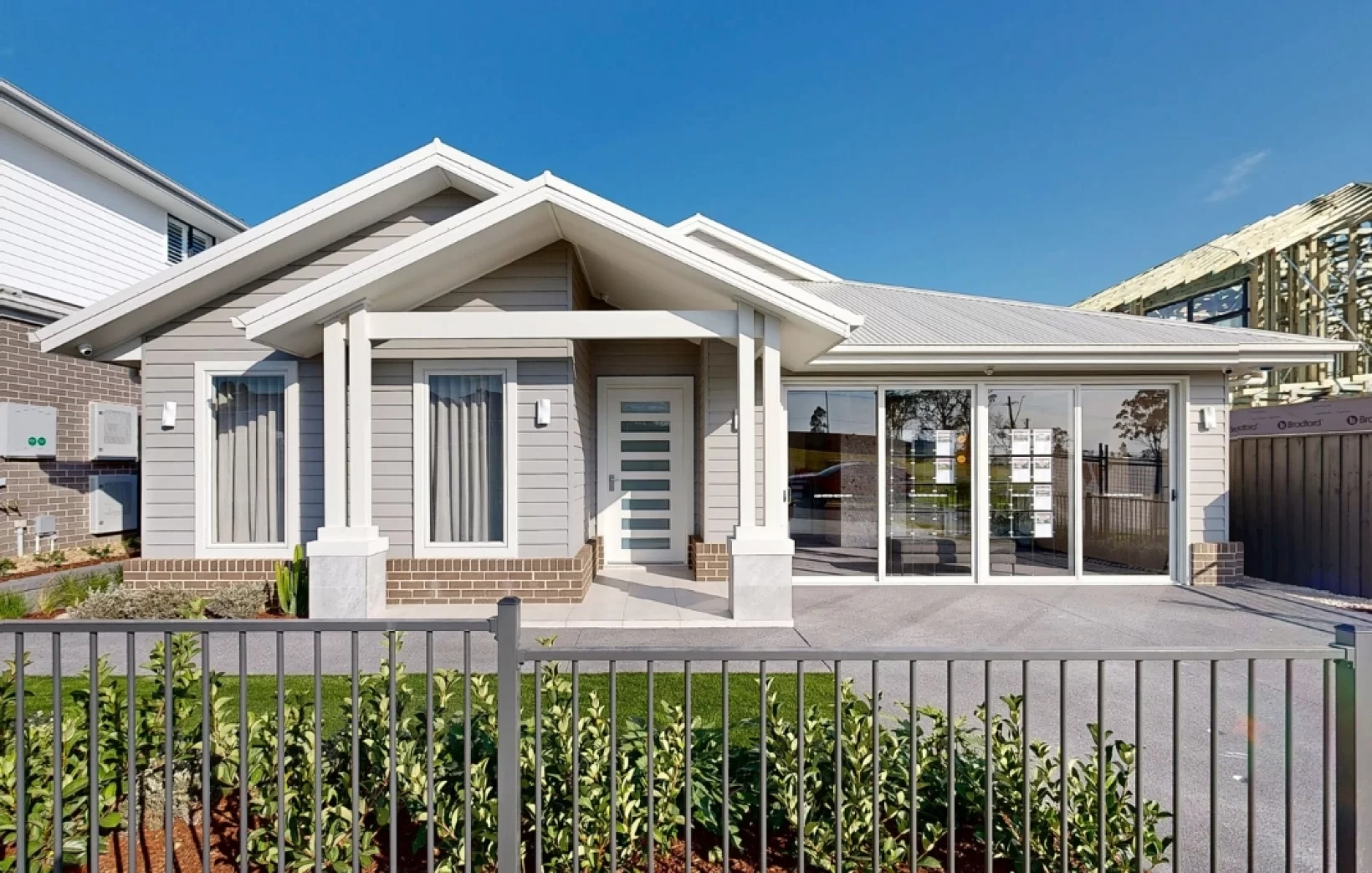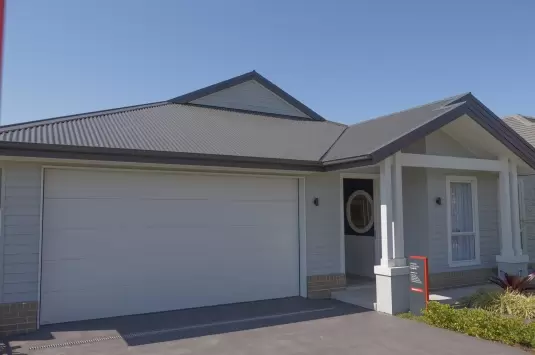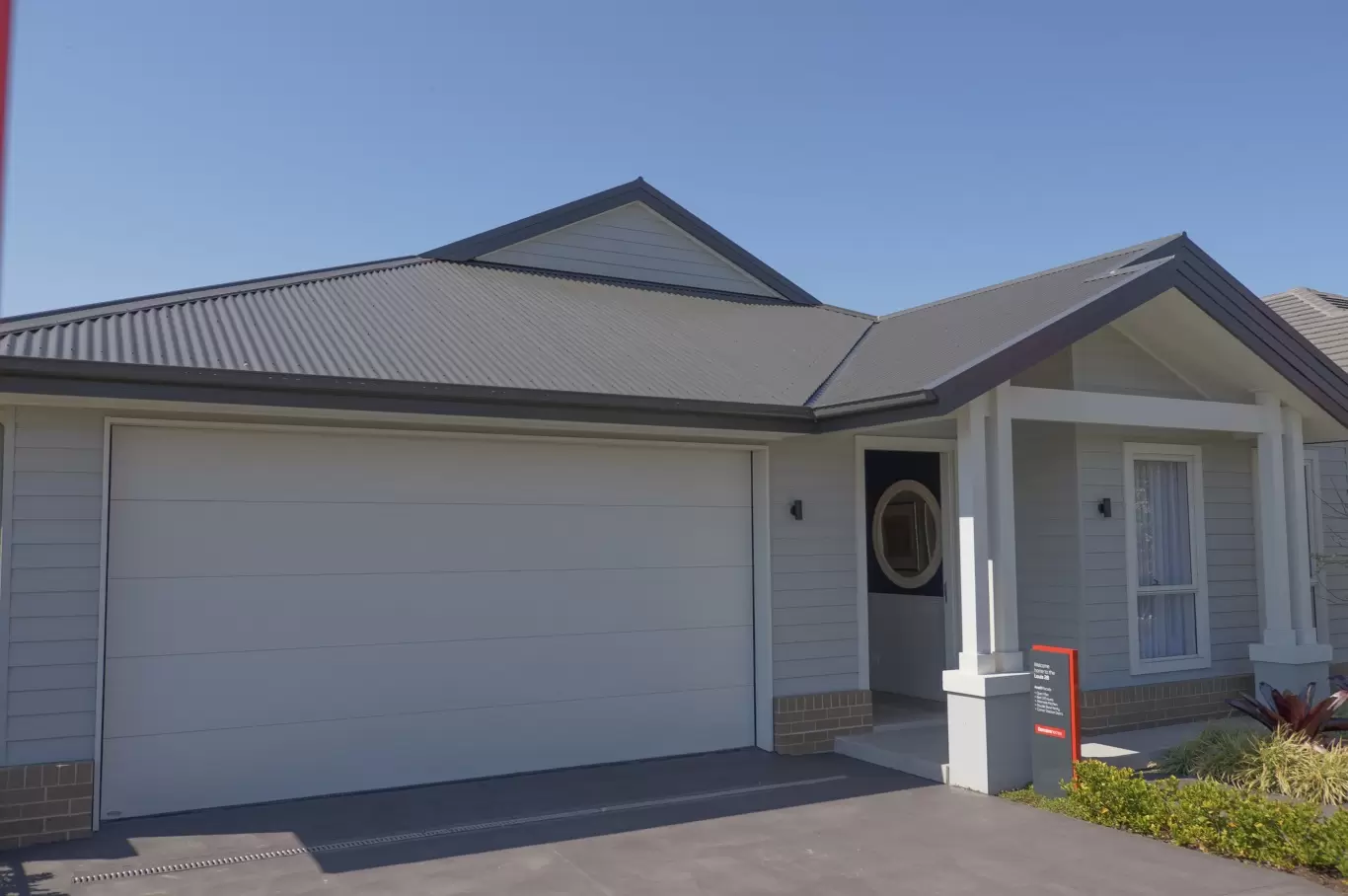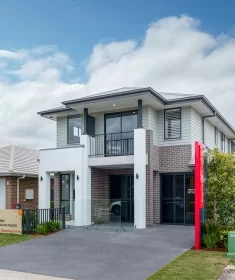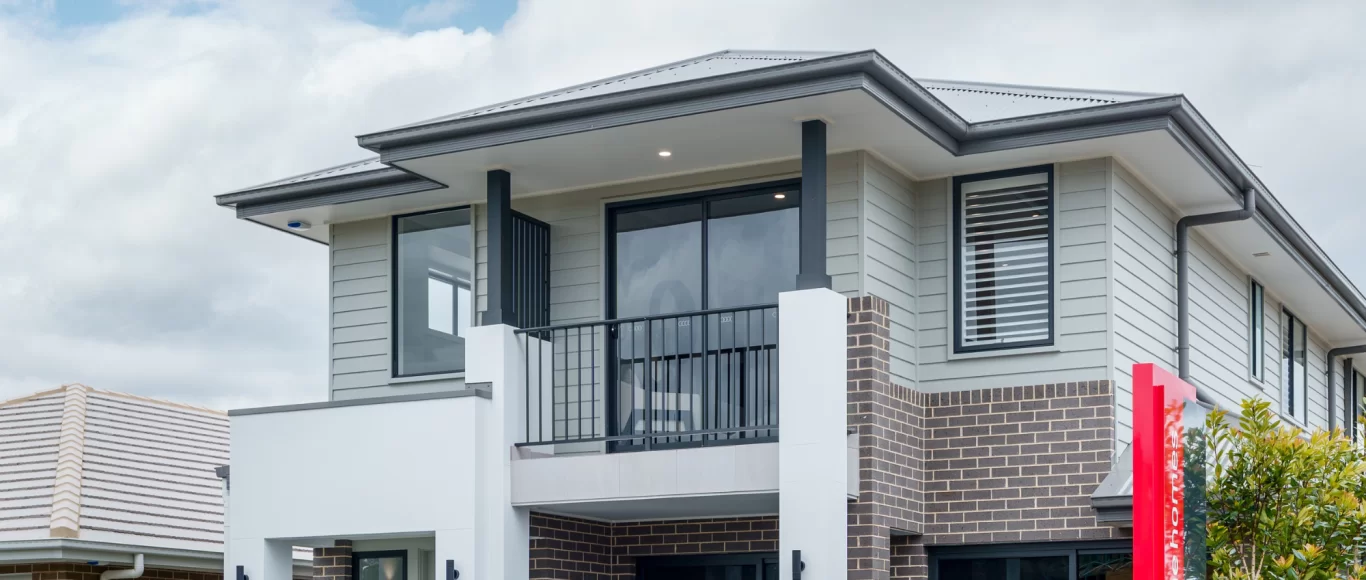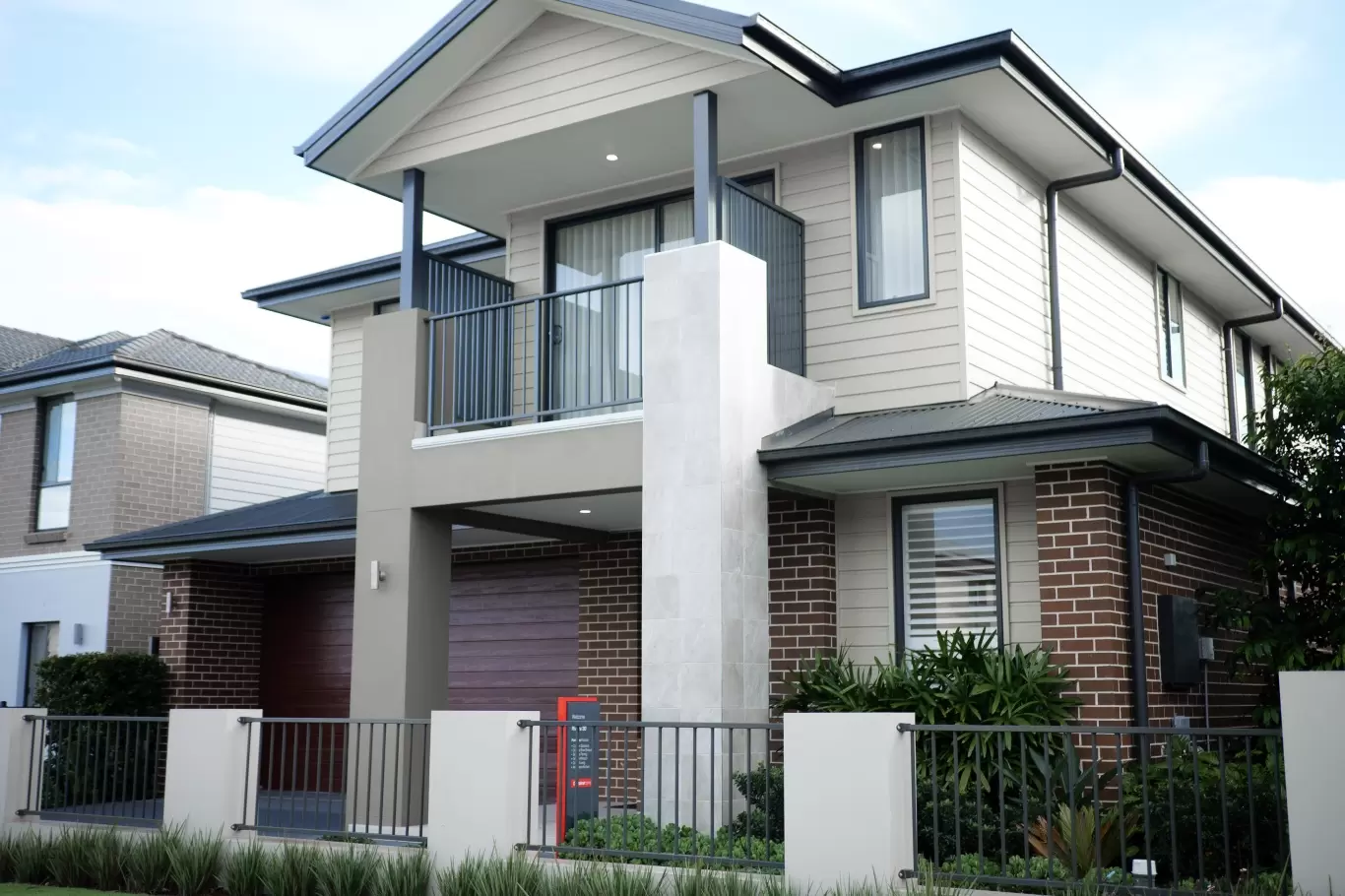Living in New South Wales means dealing with bushfire risks - it's a fact of life. If you're a property owner here, you've probably heard about BAL ratings, but you know what? You might be confused about what they actually mean for your home and safety.
I recently helped my neighbor check her BAL rating after she received a concerning letter from her insurance company. She was absolutely shocked to discover her property had a higher risk level than she thought. This simple oversight could have cost her thousands in insurance premiums and potentially put her family at risk.
Here's what many property owners don't realise: your BAL rating isn't just paperwork. It directly affects your construction costs, insurance rates, and let's be honest - most importantly, your family's safety during bushfire season.
Did you know that in NSW alone, thousands of properties have incorrect BAL assessments? This error can lead to inadequate protection or unnecessary construction expenses.
The truth is, determining your property's BAL rating in NSW isn't as complicated as it seems. With the right strategy, you can navigate this process without getting overwhelmed or making costly mistakes.
Whether you're building a new home, renovating, or simply want to ensure your property meets current safety standards, understanding your BAL rating is essential.
In this guide, I'll dive in and walk you through six straightforward tips to check your property's BAL rating in NSW - designed to help you protect your investment and, more importantly, the people who live there.
Is your property truly prepared for bushfire season? Let's find out and transform your approach to bushfire safety!
1. Determine Your BAL Rating in NSW
Unlock your property's exact bushfire risk level by identifying vegetation types and key site factors
Utilise official online tools from NSW Rural Fire Service for quick BAL calculations
Discover why professional assessments deliver the most accurate results for complex properties
Step 1: Gather Property Information
Before you can determine your Bushfire Attack Level (BAL) rating in NSW, you'll need to collect essential information about your property. Start by gathering your complete property address and land size details from your property title or local council records. These details serve as the foundation for an accurate BAL assessment.
Next, examine and document the vegetation surrounding your property. The type of vegetation significantly impacts your bushfire risk level. Take a walk around your property and note whether you have forests, woodlands, shrublands, scrub, grasslands, or managed gardens within 100 meters of your buildings. Pay special attention to the density of vegetation and any significant patches of trees or bushes.
The slope of your land plays a crucial role in determining your BAL rating. Measure or estimate the slope gradient in all directions from your buildings, particularly downhill slopes. Fire travels faster uphill, so properties on slopes facing bushland generally have higher BAL ratings. Capture photos of your property from different angles to help with later assessment or when consulting with experts.
Recording Property Specifics
Create a simple property diagram marking the distance between your buildings and different vegetation types. Note any natural features like creeks, cliffs, or existing firebreaks that might affect fire behavior. Also document any neighboring properties and their vegetation that could impact your risk assessment.
Record recent land management activities like clearing, hazard reduction burns, or landscaping changes. These activities might lower your BAL rating if they've reduced the fuel load around your property. If you've previously had a BAL assessment, note when it was conducted and any changes to your property or surrounding areas since then.
Step 2: Conduct a Bushfire Attack Level Assessment
With your property information organised, you're ready to conduct a BAL assessment using several reliable methods. The NSW Rural Fire Service offers an online Bush Fire Household Assessment Tool that provides a preliminary BAL rating based on your property details. This tool is regularly updated with the latest risk data and follows Australian Standard AS 3959-2018 for bushfire-prone areas.
To use the NSW RFS tool:
- Visit the NSW RFS Bush Fire Household Assessment Tool
- Enter your property address
- Follow the prompts to input information about vegetation types and distances
- Review the preliminary BAL rating provided
For a more detailed assessment, you can also utilise specialised calculators like the WoodSolutions BAL Calculator or FireCalculators.com, which apply the methodology from AS 3959-2018. These tools require more specific inputs but can provide more precise results.
Cross-checking with Local Council Resources
After using online tools, contact your local council to verify if your property is in a designated bushfire-prone area. Councils maintain detailed maps showing bushfire-prone land, which you can typically access through their website or by visiting their offices. These maps are color-coded to indicate different risk levels and can help confirm your initial assessment.
Request any existing bushfire risk information the council might have for your specific property. Some councils have conducted area-wide assessments that could save you time and provide additional insights. Ask about any special local conditions or requirements that might affect your BAL determination, as these can vary across different NSW regions.
Step 3: Review Assessment Results
Once you have your preliminary BAL rating, review it carefully for accuracy. Compare the results against your observations of the property and surrounding areas. The BAL rating system ranges from BAL-LOW (minimal risk) through BAL-12.5, BAL-19, BAL-29, BAL-40, to BAL-FZ (Flame Zone, the highest risk level). Each level indicates the severity of potential bushfire attack your property might face.
Check whether the assessment accurately reflects:
The correct vegetation types around your property
Accurate distance measurements to vegetation
Proper consideration of slope factors
Any specific local conditions that might affect fire behavior
If the assessment seems incorrect or if you're unsure about certain factors, document your concerns with specific examples and supporting evidence. This information will be valuable when consulting with professionals.
When to Consult a Professional
While online tools provide good preliminary assessments, consulting a certified bushfire consultant is absolutely recommended for:
Properties with complex vegetation patterns or unusual topography
Sites where you're planning significant construction or renovations
Properties in high-risk areas (potential BAL-40 or BAL-FZ ratings)
Cases where you need an official BAL certificate for council approval
Professional assessors use specialised equipment and detailed methodology to provide legally recognised BAL certificates. They conduct on-site inspections, take precise measurements, and apply their expertise to determine the most accurate BAL rating. The cost of professional assessment typically ranges from $400 to $800 depending on property complexity and location, but this investment provides certainty and may identify risk-reduction strategies.
Understanding Your BAL Rating
Your BAL rating directly affects construction requirements and insurance considerations for your property. The higher your BAL rating, the more stringent the building standards you'll need to meet. For example, a BAL-29 property will require special windows, screens, and building materials to withstand ember attack and radiant heat.
Here's what each BAL rating indicates:
BAL-LOW: Very low risk, minimal construction requirements
BAL-12.5: Risk of ember attack and radiant heat up to 12.5kW/m²
BAL-19: Increased risk, heat flux up to 19kW/m²
BAL-29: High risk, heat flux up to 29kW/m²
BAL-40: Very high risk, heat flux up to 40kW/m²
BAL-FZ (Flame Zone): Extreme risk, direct exposure to flames
According to the NSW Rural Fire Service, your BAL rating is influenced by factors such as the type and proximity of vegetation, slope of the land, and distance from the property to the vegetation. Understanding your specific rating helps you plan appropriate protection strategies and meet compliance requirements.
Using Your BAL Assessment Results
Once you have your confirmed BAL rating, keep all assessment documentation in a safe place. You'll need this information when:
Applying for building permits or renovations
Purchasing insurance for your property
Developing a bushfire survival plan
Planning landscape modifications to reduce risk
Selling your property (potential buyers will want this information)
Update your BAL assessment whenever significant changes occur to your property or surrounding areas. These changes might include new development, vegetation clearing, or updates to bushfire regulations. Most experts recommend reviewing your BAL rating every 5 years or after major bushfires in your region.
By thoroughly determining your BAL rating, you've completed the crucial first step in protecting your property from bushfire risk in NSW. This information forms the foundation for all your bushfire preparation and compliance efforts.
2. Understanding BAL Compliance in NSW
Understand what each BAL level requires for your property
Discover how local regulations impact your compliance needs
Learn practical steps to maintain your property's compliance
Know the Levels and Their Requirements
Bushfire Attack Levels represent a scale of potential bushfire intensity that might affect your property. Each BAL level comes with specific construction requirements designed to transform buildings into safer structures during bushfire events. In NSW, these requirements are particularly important as significant portions of the state are classified as bushfire-prone areas.
BAL-LOW represents minimal risk and requires standard building practices. BAL-12.5 indicates ember attack risk, requiring sealed gaps, non-combustible materials for certain components, and toughened glass. BAL-19 adds requirements for screened windows, fire-resistant timber, and enhanced protection for external walls. BAL-29 introduces stricter requirements around windows, doors, and external surfaces. BAL-40 requires higher fire resistance ratings for most building elements. Finally, BAL-FZ (Flame Zone) demands the ultimate level of protection with fire-rated construction throughout.
"The BAL rating is the Australian standard for measuring the risk of a home's exposure to ember attack, radiant heat and direct flame contact," according to Ecoliv, who specialise in sustainable homes in bushfire zones. This rating system forms the backbone of NSW's approach to building in fire-prone areas. The higher your BAL rating, the more protective measures your property needs.
Ensuring Your Construction Meets Standards
Once you know your property's BAL rating, you must ensure all construction complies with those standards. This applies to both new builds and renovations. The NSW Rural Fire Service states that "Building to the correct BAL measure can help a building to potentially survive a bush fire and provide better protection for human life."
For existing properties, this might mean transforming elements like windows, doors, decks, and roofing to meet compliance. For new construction, these requirements must be incorporated into the design phase. Common compliance issues include inadequate sealing of gaps, inappropriate building materials, and insufficient protection for windows and doors.
To verify compliance, review your building plans against the requirements for your specific BAL level as outlined in Australian Standard AS3959. Document all fire-resistant materials used and keep records of compliance. This documentation is absolutely perfect for insurance purposes and when selling your property.
Check Local Regulations
NSW building codes for bushfire safety evolve based on new research and lessons from past bushfire events. Since the devastating 2019-2020 bushfire season, regulations have become more stringent in many areas. Local councils may implement additional rules beyond the state requirements, especially in areas with high historical fire activity.
Your local council is the primary authority for enforcing bushfire protection measures. They're designed to provide specific information about local requirements that may extend beyond standard BAL ratings. For example, some councils might require wider asset protection zones or additional water storage for firefighting purposes.
NSW Planning Portal offers up-to-date information on bushfire planning requirements. The portal features interactive maps showing bushfire-prone areas and relevant planning documents. Regular checks of this resource help ensure you're aware of any regulatory changes that might affect your property's compliance strategy.
Staying Updated with Regulatory Changes
Regulations transform as bushfire research advances and climate conditions change. The NSW Rural Fire Service and local councils regularly update their guidelines, often annually before the bushfire season begins. Setting calendar reminders to check for updates each year in early spring is an efficient practice.
Join local community groups focused on bushfire preparedness, as these often share information about regulatory changes. Many councils offer email newsletters specifically about local environmental and planning updates. The NSW Rural Fire Service also provides alerts about regulatory changes through their website and social media channels.
"Determining the BAL ensures that development is undertaken in such a way that risk to people and property is minimised," notes the NSW Rural Fire Service, emphasizing why staying current with regulations matters so much for your safety planning.
Document Your Compliance Efforts
Creating and maintaining thorough documentation of all bushfire compliance measures is essential for several reasons. First, this documentation may be required during building inspections or when applying for insurance. Second, it provides a clear record of compliance if questions arise later, particularly after property ownership changes.
Your compliance documentation should include your BAL assessment certificate, details of construction materials used, photographs of completed work, and records of any professional inspections or certifications. Store these documents both physically and digitally, with backups in case of emergency.
Update this documentation whenever you implement changes to your property that might affect its bushfire resilience. This includes renovations, landscaping changes, or modifications to surrounding vegetation. Dated photographs showing compliance measures in place provide valuable evidence that you've covered all requirements.
Professional Certification Options
While self-assessment is possible for some aspects of BAL compliance, professional certification provides stronger legal protection and greater peace of mind. Several types of professionals can provide BAL compliance certification in NSW:
Accredited BAL assessors have specific training in determining bushfire risk levels and compliance requirements. Building certifiers can verify that construction meets BAL standards. Fire safety engineers can develop custom solutions for complex properties. The NSW Rural Fire Service notes that "It is a requirement that a person who is recognised as having the appropriate qualifications and experience undertakes the assessment."
Professional certification typically costs between $500-$2,000 depending on property complexity and location. This cost is modest compared to the potential cost of non-compliance, which can include denied insurance claims, council penalties, or catastrophic property loss during a bushfire event.
Implement Practical Compliance Measures
Beyond formal construction requirements, practical measures can help maintain compliance and maximise safety. Regular property maintenance is crucial for ongoing BAL compliance. Even properties built to the perfect standards initially can become non-compliant if not properly maintained.
Clear gutters and roof valleys of leaves and debris at least quarterly, more often during autumn when leaf fall is heaviest. Remove flammable materials from around the building, including woodpiles, garden furniture, and flammable mulch. Maintain asset protection zones by regularly mowing grass, removing fallen branches, and thinning vegetation according to BAL requirements.
Annette Higgs, a design professional, notes: "As the NSW RFS states, any building we design will have to meet stringent criteria from the relevant authorities based on the bushfire ATTACK level." These criteria extend beyond initial construction to ongoing maintenance strategies.
Seasonal Compliance Checks
Establish a seasonal routine for BAL compliance checks. Before bushfire season, inspect external surfaces for gaps and seal them. Check screens on windows and doors for damage. Ensure water supplies and pumps for firefighting are operational. After storms, inspect for wind damage that might create new entry points for embers.
During winter, plan and execute larger compliance projects like replacing vulnerable building elements or implementing landscaping changes. Spring is ideal for vegetation management before summer fire risks increase. Summer requires vigilance in maintaining fire breaks and keeping the property clear of debris.
CSIRO Research explains that "Bushfire Attack Level or BAL is a method for rating the intensity of a location's potential exposure to bushfire. Identifying the Bushfire Attack Level is essential for bushfire hazard assessment and mitigation." This ongoing cycle of assessment and maintenance is key to unlocking effective bushfire preparation.
Address Common Compliance Challenges
Many property owners face similar challenges when trying to meet BAL requirements. Understanding these common issues can help you organise your compliance planning more effectively. Older buildings often present significant compliance challenges because they were built before current standards existed. Transforming these properties can be expensive but is essential for safety.
Properties with steep slopes face heightened fire risk and stricter requirements. The slope increases fire spread speed and intensity, requiring additional protective measures. Dense native vegetation, while ecologically valuable, can significantly increase BAL ratings. Work with environmental experts to balance conservation with fire safety.
Limited budgets can make full compliance seem daunting. Prioritise the most critical safety features first, then develop a long-term plan for complete compliance. Let's not forget that many councils offer grant programs to help property owners implement bushfire safety measures, especially in high-risk areas.
Creative Compliance Solutions
For properties with challenging compliance issues, creative solutions may be necessary. Fire-resistant landscaping using low-flammability plants can create natural buffer zones. Strategic placement of non-combustible features like stone walls, ponds, or gravel areas can break potential fire paths. Some property owners install sprinkler systems specifically designed for bushfire defense as a supplementary measure.
For heritage properties where modern materials would compromise historical value, work with heritage specialists who understand both preservation and fire safety. There are often acceptable compromises that maintain character while improving safety. Community-based approaches, where neighbors work together on boundary vegetation management, can transform safety for multiple properties while sharing costs and effort.
3. Calculating the BAL Score Yourself
Unlock the ability to accurately calculate your property's Bushfire Attack Level using official tools
Discover how to validate your results for maximum safety compliance
Save money by performing initial assessments yourself before professional verification
Use Available Tools
Calculating your Bushfire Attack Level (BAL) score is absolutely possible without professional help for initial assessments. The NSW Rural Fire Service has crafted resources that help property owners determine their bushfire risk. This self-assessment approach can save you money and give you a deeper understanding of your property's fire safety needs.
To begin a BAL calculation, you'll need the NSW Rural Fire Service's online BAL calculator. This free tool guides you through the assessment process using standardised formulas based on Australian Standard AS3959. The calculator requires specific information about your property, including its location, surrounding vegetation types, and land slope measurements.
Here's how to utilise the NSW RFS calculator effectively:
- Visit the NSW Rural Fire Service website (www.rfs.nsw.gov.au)
- Navigate to the "Plan and Prepare" section
- Find the "BAL Calculator" tool
- Enter your property address
- Input the vegetation types within 100 meters of your home
- Provide the slope measurements (especially for downhill areas)
- Note the distance between your home and different vegetation types
- Submit the information to receive your preliminary BAL rating
Understanding Calculator Results
The calculator will provide one of six possible BAL ratings: BAL-LOW, BAL-12.5, BAL-19, BAL-29, BAL-40, or BAL-FZ (Flame Zone). Each rating corresponds to a specific level of bushfire risk and construction requirements. For example, BAL-29 indicates a heat flux exposure of up to 29kW/m², requiring more robust construction materials than a BAL-12.5 rating.
Always check the accuracy of the calculator's vegetation classifications. The tool works with broad categories, but specific plant species on your property might transform your actual risk level. Take photos of your property's vegetation and compare them with the RFS vegetation classification guide to ensure you've selected the correct category.
Verify With Official Guidelines
After using the online calculator, it's essential to verify your results against official NSW Rural Fire Service guidelines. The "Planning for Bush Fire Protection" document provides comprehensive insights about BAL assessments and is updated regularly to reflect current best practices.
To verify your self-assessment:
- Download the latest "Planning for Bush Fire Protection" document from the NSW RFS website
- Review the BAL assessment methodology section
- Compare your inputs with the document's recommended assessment criteria
- Check that you've correctly classified all vegetation within 100 meters
- Verify that you've accurately measured slope gradients
- Ensure you've accounted for any special landscape features
Pay special attention to the vegetation classification. The difference between "forest" and "woodland" categories can significantly change your BAL rating. The NSW RFS guidelines include detailed descriptions and photographic examples of each vegetation type to help you make accurate determinations.
Common Self-Assessment Mistakes
Many property owners make these common mistakes when calculating their BAL score:
- Incorrectly measuring distances to vegetation
- Misclassifying vegetation types
- Not accounting for neighboring properties' vegetation
- Overlooking small changes in slope that affect fire behavior
- Failing to consider potential future vegetation growth
To avoid these errors, take multiple measurements and photographs from different angles of your property. Create a simple property map showing vegetation boundaries, structures, and slope indicators. This visual reference helps ensure consistency in your assessment.
Validate With Expert Services
While self-assessment provides a good starting point, professional validation adds certainty to your BAL rating. The question "Can I do my own BAL assessment in NSW?" has a nuanced answer. You can perform initial calculations, but for official purposes like development applications or insurance, you'll need a certified assessor's validation.
A professional BAL assessment typically costs between $350-$800 depending on property size, complexity, and location. While this represents an additional expense, it provides several benefits:
- Legal recognition for development applications
- Greater accuracy through professional tools and expertise
- Detailed documentation for insurance purposes
- Identification of specific mitigation strategies
- Peace of mind that your assessment meets regulatory standards
To find a certified assessor:
- Check the Fire Protection Association Australia's website for accredited practitioners
- Contact your local council for recommendations
- Ask your insurance company for preferred assessors
- Request quotes from multiple providers to compare services and costs
Understanding Self-Assessment Limitations
Self-assessments have inherent limitations you should recognise. We've found that personal perspective can influence how we perceive risk on our own properties. You know, we might underestimate vegetation density or overlook factors that increase fire danger. Professional assessors bring objectivity and standardised measurement techniques.
The key differences between BAL ratings like BAL-29 and BAL-40 involve the predicted heat flux exposure during a bushfire event. BAL-29 indicates exposure to 19-29kW/m², while BAL-40 indicates 29-40kW/m². These differences translate to specific construction requirements and safety measures. A professional assessor can explain these distinctions and their implications for your property.
Document Your Findings
Proper documentation of your BAL calculation process is critical. Create a comprehensive file that includes:
- Date of assessment
- Property details and measurements
- Photographs of all vegetation within 100 meters
- Screenshots of online calculator results
- Notes on any special circumstances or considerations
- Maps indicating vegetation types and distances
- Slope measurements and calculations
- Dates of any vegetation management activities
This documentation serves multiple purposes. It provides a baseline for future assessments, helps track changes to your property over time, and supports conversations with professionals when you seek validation. Keep digital and physical copies of all documents in a safe, accessible location.
When documenting vegetation, include seasonal variations if possible. Some plants present different fire risks depending on the time of year. Note any planned vegetation clearing or landscape modifications that might affect future BAL calculations.
Creating a BAL Assessment Timeline
Establish a regular schedule for reviewing and updating your BAL assessment. Annual reviews are recommended, with additional assessments after:
- Significant property modifications
- Changes to surrounding vegetation (including neighboring properties)
- Updates to building codes or assessment methodologies
- Severe weather events that alter landscape conditions
- Planned construction or renovation projects
Document each review date and any changes observed since the previous assessment. This timeline creates a valuable history of your property's bushfire risk management and demonstrates your commitment to ongoing safety compliance.
4. Enhance Property Fire Safety Regulations in NSW
Implement strict fire safety practices to protect your property
Utilise proper building materials to meet NSW standards
Maintain regular upkeep for sustained fire safety
Implement Best Practices for Safety
Fire safety should be your ultimate priority as a property owner in NSW, especially in bushfire-prone areas. Implementing essential safety practices isn't just about meeting regulations—it's about protecting lives and safeguarding your investment. After you've calculated your BAL score, let's dive into making sure your property meets or exceeds the required safety standards.
Start by conducting a thorough inspection of your property. Look for vulnerable areas where fire could easily ignite or spread. This includes checking for dry vegetation, fallen branches, and other flammable materials near your home. The NSW Rural Fire Service recommends creating a safety zone of at least 20 meters around your house where you minimise potential fire hazards.
Clear Debris Regularly
Establish a consistent schedule for clearing debris from your property. This is one of the most efficient ways to reduce fire risk:
- Remove dead leaves, twigs, and branches from your roof and gutters at least monthly during fire season
- Clear dried grass, dead plants, and fallen logs from around your home
- Keep woodpiles, gas bottles, and other flammable materials at least 10 meters from your house
- Remove any material under decks and floors where embers could collect
- Trim tree branches that hang over your roof
"Fire safety is a core responsibility of owners corporations and strata committees. It is not simply a matter of compliance with regulations. It is one area where a 'she'll be right' attitude or 'near enough is good enough' can be a fatal error."
Fire-Resistant Landscaping
Transform your landscaping as another strategic step in reducing fire risk:
- Create fire breaks with non-flammable surfaces like gravel paths or driveways
- Plant fire-resistant species that are less likely to ignite
- Space trees and shrubs to prevent fire from jumping between them
- Keep lawns short and well-watered during fire season
- Utilise stone walls or metal fences instead of wooden ones where possible
The NSW Department of Planning offers expert insights on fire-resistant plants suitable for different regions. These plants typically have high moisture content, low oil content, and thick bark. Examples include succulents, many native Australian plants, and certain varieties of trees that drop less debris.
When planning your landscape, consider how fire behaves. You know fires typically move uphill faster, so pay extra attention to sloped areas on your property. Create more extensive fire breaks on the sides of your property that face likely fire approaches.
Invest in Fire-resistant Building Materials
Building with fire-resistant materials is absolutely essential for properties in bushfire-prone areas. The Building Code of Australia (BCA) and Australian Standard AS 3959 outline specific requirements for construction in bushfire-prone areas based on BAL ratings.
For new constructions, your building plans must meet the standards for your property's BAL rating. These standards cover everything from roofing materials to window construction, external doors, verandas, and decks. The higher your BAL rating, the more stringent the requirements.
Essential Fire-Resistant Materials
For properties in bushfire-prone areas, here's our list of highly recommended materials:
- Metal roofing with sealed eaves and fire-resistant gutter guards
- Toughened glass for windows with metal screens
- Fire-resistant timber (treated or naturally resistant species)
- Non-combustible external wall cladding like brick, stone, or fiber cement
- Metal framing for decks and verandas
- Concrete or metal support posts rather than timber
"Regulations are being progressively tightened to overcome a history of neglect and a lax approach to compliance. It is a key focus of the NSW Building Commissioner's mission to raise standards in residential apartments with fire safety identified as one of the primary areas where defects are found."
Upgrading Existing Structures
If your property was crafted before current bushfire standards were introduced, consider these powerful upgrades:
- Replace wooden decks with fire-resistant alternatives
- Install metal window and door screens with 2mm mesh
- Seal all gaps in external walls, roofs, and around windows and doors
- Upgrade to a metal roof if you currently have tiles or other materials
- Install ember guards in gutters and at the base of wall cavities
- Add shutters to windows and doors for extra protection
Remember that these upgrades should be completed by qualified professionals who understand fire safety standards. Keep all documentation of the work done, as this can be important for insurance purposes and future property sales.
Implement Safety Systems and Equipment
Beyond building materials and landscape management, proper safety systems are crucial for comprehensive fire protection. These systems can provide early warning and active defense during a bushfire emergency.
Fire safety experts recommend several key systems for bushfire-prone properties:
- Install smoke alarms throughout your property, with interconnected systems preferred
- Consider a home sprinkler system for high-risk areas
- Maintain multiple fire extinguishers rated for different types of fires
- Install a fire blanket in the kitchen and other high-risk areas
- Set up a reliable water supply with a pump that can work without mains power
These typically include "automatic fire detection and alarm systems, automatic fire suppression systems such as sprinkler systems, emergency lighting and exit signs, fire hose reels, fire hydrants and portable fire extinguishers, fire doors and mechanical air-handling systems, and lightweight fire-resistant construction materials."
Regular testing of these systems is essential. Mark your calendar for monthly checks of smoke alarms, yearly professional inspections of fire extinguishers, and seasonal tests of your water supply system before fire season begins.
Emergency Planning and Preparation
Having the right equipment is only part of the solution. You'll also need a clear emergency strategy:
- Create and practice a detailed bushfire survival plan with all household members
- Prepare an emergency kit with essentials like water, food, first aid supplies, and important documents
- Identify multiple evacuation routes from your property
- Establish a communication plan for family members who might be separated
- Consider special needs for children, elderly family members, and pets
Review and update your plan annually, preferably before the start of fire season. Make sure everyone knows what to do in case of a fire emergency, including where to meet and who to contact.
Ensure Compliance with Local Regulations
Different local government areas in NSW may have additional requirements beyond the state standards. These local regulations often reflect specific regional risks and conditions.
To ensure full compliance:
- Contact your local council to request their specific bushfire safety requirements
- Schedule a meeting with a local building inspector to review your property
- Obtain any necessary permits before making significant changes to your property
- Keep records of all inspections, permits, and compliance documents
- Join local community bushfire preparation groups to stay informed
Many councils offer free or low-cost inspections to help property owners identify fire safety issues. These inspections can provide valuable guidance on what improvements are most urgent for your specific situation.
Recent reforms to fire safety regulation in NSW have strengthened requirements for both new and existing buildings. Stay informed about these changes through regular checks of the NSW Fair Trading website and your local council's communications.
The effort required to enhance your property's fire safety is significant, but we've covered why the benefits are worth it. Beyond protecting lives and property, these improvements can potentially reduce insurance premiums and increase property value. Most importantly, they provide peace of mind during bushfire season, knowing you've taken responsible steps to maximise protection and unleash a strategy that nurtures what matters most.
Conclusion
You've now got the ultimate tools to check your property's BAL rating in NSW with absolute confidence. From gathering key property information to utilizing the NSW Rural Fire Service resources, these six steps create a perfect strategy to understand your bushfire risk level. Remember that BAL ratings aren't just regulatory requirements – they're critical safeguards designed to protect your home and family in bushfire-prone areas.
Taking time to accurately assess your BAL rating helps you make smart decisions about building materials and safety features. Whether you're planning to calculate it yourself or let our team of experts help you, what matters most is getting it right. Regular reassessment is also important, as changes to your property or surrounding vegetation can transform your rating.
By staying informed about BAL compliance in NSW, you're not just meeting legal requirements – you're maximizing protection for your investment and ensuring peace of mind during bushfire season. The efficient effort of checking your BAL rating today can save significant heartache tomorrow.
For the most current information, always consult the NSW Rural Fire Service website and your local council guidelines. We've covered everything you need for an unforgettable BAL rating experience!
